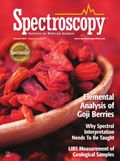Article
Spectroscopy
Spectroscopy
A Matter of Interpretation
Author(s):
Today, many practitioners of spectroscopic methods, particularly those working in industry, find themselves facing significant challenges. More and more often they are asked (read “required”) - because of expanding work or decreased staffing - to take on the use of new techniques for which they do not have a strong background or training. To make matters worse, the use of the unfamiliar methods is being added to their existing workload, so they don’t have much time to dedicate to learning how to use them. To top it off, the in-house “go-to person” - the highly experienced and highly educated expert from whom one could get help when dealing with a vexing problem - probably no longer exists within the company.
An additional complication in such situations is the old saying that “you don’t know what you don’t know.” This problem very often arises in the interpretation of infrared spectra.
Inexperienced IR users sometimes think that interpreting spectra is simply a process of looking them up in some reference source. That approach, however, can often lead to errors - of which the user may not even be aware.
It is these concerns that have led us to launch a new quarterly column in Spectroscopy, called “IR Spectral Interpretation Workshop.” In this new column, Brian C. Smith will explain the processes to interpret infrared spectra properly and thus help readers interpret the spectra of important functional groups. To provide the right foundation for those explanations, he will start by laying out some basic theory of infrared spectra.
Brian spent more than 20 years training spectroscopists, so he knows first hand the challenges you face as you learn and become more expert in these methods. He has written three books on the subject, so he also knows how to explain the concepts in writing.
Check out Brian’s first installment in this issue. I think you will find his explanations extremely clear and enlightening. In future installments, he will provide examples of spectra for readers to interpret on their own, with answers being revealed in subsequent issues. During your work on those problems, you can also contact Brian for help and clarification of doubts you faced along the way.
We hope you enjoy this new column, and that you participate in the interactive elements of it too.

Newsletter
Get essential updates on the latest spectroscopy technologies, regulatory standards, and best practices—subscribe today to Spectroscopy.



